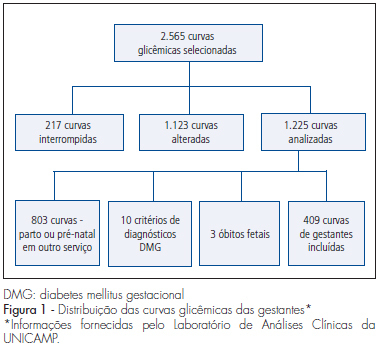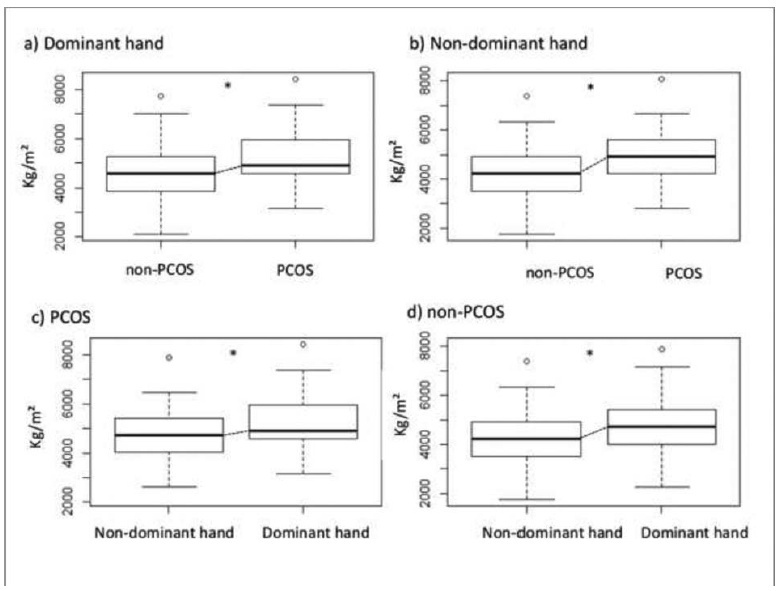Summary
Revista Brasileira de Ginecologia e Obstetrícia. 2006;28(2):81-90
DOI 10.1590/S0100-72032006000200003
PURPOSE: to evaluate the incidence and types of major congenital malformations (MCM) in liveborn children conceived by intracytoplasmic sperm injection (ICSI). METHODS: a total of 680 liveborn children resulted from 511 couples submitted to ICSI from January, 1999 to December, 2002. Data collection of the children was performed through standardized questionnaire and clinical examination. Of the 511 couples, 366 had been contacted for a sampling of 371 gestations. Of the 680 liveborn, 520 had been evaluated, 250 of them (48.1%) through questionnaire and 270 (51.9%) through questionnaire and physical examination. Two hundred and fifty children were from singleton pregnancies and 270 from multiple pregnancies. Malformations were classified according to the 10th revision of the International Statistical Classification of Diseases and Related Health. Only MCM were analyzed in this study. The incidence of MCM was compared with that of the general population obtained by the Latin American Collaborative Study of Congenital Malformations. The statistical analysis was performed by the c² test (level of significance p<0.05). RESULTS: of the 520 children, 15 presented MCM, resulting in an incidence of 2.9%. There was no difference in relation to the control group (p>0.05), which showed 2.6% incidence of MCM. The most frequent malformations were of cardiac origin (four isolated and two associated), corresponding to 40% of the total. The other types of MCM were: renal (three), neural tube (two), skull (one), cleft lip (one), genital (one), Down syndrome (associated with cardiac malformations) (two), and musculoskeletal (one). Six MCM occurred in children from singleton pregnancies and nine in children from multiple pregnancies. CONCLUSION: the liveborn children conceived by ICSI presented incidence of major congenital malformations (2.9%) near to the expected for the general population (2.6%). However, to establish the risks of MCM with precision it is necessary to continue the evaluation of the children conceived by ICSI.
Summary
Revista Brasileira de Ginecologia e Obstetrícia. 2021;43(2):81-83
Summary
Revista Brasileira de Ginecologia e Obstetrícia. 2020;42(2):81-89
The present study aimed to analyze cardiac autonomic modulation via spectral and symbolic analysis of heart rate variability (HRV) in women with polycystic ovary syndrome (PCOS) who were subjected to two consecutive tilt tests.
A total of 64 women were selected and divided into 2 groups: control (without PCOS), and PCOS. Concentrations of follicle-stimulating hormone, luteinizing hormone, prolactin, estradiol, homocysteine, sex hormone-binding globulin, thyroid stimulating hormone, fasting insulin, testosterone, androstenedione, and 17-hydroxyprogesterone levels, triglycerides, free androgen index (FAI), and homeostasis assessment model (HOMA-IR) were assessed. Cardiac autonomic modulation was evaluated by spectral and symbolic analyses during two consecutive tilt tests (two moments) and supine moments before, between and after (three moments) the tilt tests.
Women with PCOS had higher fasting insulin, HOMA-IR indexes, testosterone and FAI. Additionally, we observed that the PCOS group had greater sympathetic autonomic cardiac modulation in supine 2, tilt 1, and supine 3 moments compared with controls.
Women with PCOS had higher autonomic sympathetic cardiac modulation even after a second tilt test. No adaptation to this provocative test was observed. Spectral analysis was more sensitive for identifying differences between groups than the symbolic analysis.
Summary
Revista Brasileira de Ginecologia e Obstetrícia. 2003;25(2):81-86
DOI 10.1590/S0100-72032003000200002
PURPOSE: to describe the frequency of precursor lesions of cervical cancer in 15 to 29-year-old women, associating the degree of damage with the epidemiologic characteristics and associated risk factors. METHODS: a transverse study was performed, where the precursor lesions of cervical cancer were investigated through Papanicolaou test in 15 to 29 year-old women with active sexual life, living in Rio Branco (AC), in the period from January to September 2001. The investigated data included epidemiologic information, risk factors and physical-ginecological examination results, including Schiller test and smears for cytopathologic test. RESULTS: of the 2,397 women studied, 155 (6.4%) showed some kind of cellular epithelial alteration, 146 (94.2%) squamous lesions and 9 (5.8%) glandular lesions. In 15 to 19 year old women, the frequency (6.9%) of cellular epithelial alteration was similar to that observed in 20 to 29-year-old women (p>0.65). These alterations were associated with low educational level (p<0.003), with the number of sexual partners (p<0.04), with STD history (p<0.001) and smoking habits (p<0.01). CONCLUSION: the high frequency of precursor lesions in an age lower than expected, and following an epidemiologic pattern observed in other phases of women's life, shows the early exposure to risk factors, which anticipates the development of cervical cancer.
Summary
Revista Brasileira de Ginecologia e Obstetrícia. 2011;33(2):81-86
DOI 10.1590/S0100-72032011000200005
PURPOSE: to determine the prevalence of adverse gestational and neonatal outcomes in women with a positive screening and negative diagnosis for gestational diabetes mellitus (GDM). METHODS: a retrospective descriptive cross-sectional study was conducted from 2000 to 2009 on 409 women with positive screening for GDM. The maternal variables studied were: age, body mass index, history of cesarean section, macrosomia or diabetes mellitus in a previous pregnancy and a personal or family history of diabetes mellitus and chronic arterial hypertension. The neonatal variables studied were: polyhydramnios, gestational age at birth, prematurity, cesarean delivery, large for gestational age (LGA) newborn, macrosomia, Apgar score, neonatal respiratory distress syndrome, hypoglycemia and hyperbilirubinemia. Uni- and multivariate descriptive analyses were first performed regarding risk factors and neonatal outcome and the prevalences and respective 95% confidence intervals were determined. RESULTS: the route of delivery was cesarian section in 255 cases (62.3%), preterm birth occurred in 14.2% of cases and 19.3% of the newborns were LGA. The risk factors correlated with LGA newborns were overweight or obesity, maternal age and a history of macrosomia in a previous pregnancy. CONCLUSIONS: a high rate of LGA newborns was observed in the population with positive risk factors or altered fasting glycemia on the occasion of the first prenatal visit, even when the glycemia curve was normal, with cesarean rates above those habitually observed in populations considered to be of low risk. Pregnant women with these characteristics represent a differential group.

Summary
Revista Brasileira de Ginecologia e Obstetrícia. 2002;24(2):81-86
DOI 10.1590/S0100-72032002000200002
Purpose: to evaluate the predictive capacity of the sentinel lymph node (SLN) in relation to the axillary lymph node status in patients with initial invasive breast carcinoma submitted or not to neoadjuvant chemotherapy. Method: a prospective study was performed in 112 patients divided into two groups. The first group comprised 70 patients who had not received previous chemotherapy (Group I) and the second consisted of 42 patients who were submitted to neoadjuvant chemotherapy in three cycles of AC (adriamycin + cyclophosphamide) (Group II). Regarding chemotherapy, we observed partial response >50% in 21 patients, being complete in three of them, and <50% in 19 patients; in two patients progression of the disease occurred. A peritumoral injection of 99mTc dextran was applied with the help of stereotaxy in 29 patients with nonpalpable tumors, 16 of Group I and 13 of Group II. The radioactive accumulation shown by scintigraphy guided the biopsy of the axillary SLN with the help of a probe. The anatomopathologic study of SLN was based initially on a single section. When the LSN was free, it was submitted to serial sections at 50 mum intervals, stained with HE. Results: SLN was identified in 108 patients. No identification has been obtained in four patients, all with nonpalpable lesions (3 patients of Group I and 1 of Group II). The method's accuracy in predicting the axillary lymph node status was 100% in patients who did not receive neoadjuvant chemotherapy and 93% in those to whom this kind of treatment was administered. This difference proved to be statistically significant. Conclusions: the present study allowed us to conclude that in all patients who did not receive previous chemotherapy treatment, the SLN study was effective in predicting the axillary lymph node status. The high rate of false-negative results in the group of patients submitted to neoadjuvant chemotherapy seems to invalidate the use of SLN study these patients.
Summary
Revista Brasileira de Ginecologia e Obstetrícia. 2021;43(11):811-819
To investigate the characteristics of women who had preterm birth (PTB) and related outcomes according to ethnicity.
A secondary analysis of a multicenter cross-sectional study conducted in Brazil. Women who had PTB were classified by self-report as white and non-white. Clinical, pregnancy, and maternal data were collected through postpartum interviews and reviews of medical charts. The sociodemographic, obstetric and clinical characteristics of the women, as well as the mode of delivery and the neonatal outcomes among different ethnic groups were compared through a bivariate analysis.
Of the 4,150 women who had PTB, 2,317 (55.8%) were non-white, who were more likely: to be younger than 19 years of age (prevalence ratio [PR]: 1.05; 95% confidence interval [95%CI]: 1.01-1.09); to be without a partner; to live on low income; to have lower levels of schooling; to have ≥ 2 children; to perform strenuous work; to be fromthe Northeastern region of Brazil rather than the from Southern region; to have a history of ≥ 3 deliveries; to have an interpregnancy interval<12 months; to have pregnancy complications such as abortion, PTB, preterm premature rupture of membranes (pPROM), and low birth weight; to initiate antenatal care (ANC) visits in the second or third trimesters; to have have an inadequate number of ANC visits; to be under continuous overexertion; to smoke in the first and second or third trimesters; and to have anemia and gestational hypertension. The maternal and neonatal outcomes did not differ between the groups, except for the higher rate of low birth weight (73.7% versus 69.0%) in infants born to non-white women, and the higher rate of seizures (4.05% versus 6.29%) in infants born to white women.
Unfavorable conditions weremore common in non-whites than inwhites. Proper policies are required to decrease inequalities, especially in the context of prematurity, when women and their neonates have specific needs.
Summary
Revista Brasileira de Ginecologia e Obstetrícia. 2020;42(12):811-819
The present study aimed to investigate the physical performance of handgrip strength (HGS) in women with polycystic ovary syndrome (PCOS).
A case-control study that included 70 women with PCOS and 93 agematched healthy women aged between 18 and 47 years with body mass index (BMI) between 18 Kg/m2-39.9 Kg/m2. The serum levels of total testosterone, androstenedione, insulin, estradiol, thyroid-stimulating hormone (TSH), prolactin, sex hormonebinding globulin (SHBG), and 17-hydroxyprogesterone (17-OHP) were measured. The free androgen index (FAI) and the homeostatic model assessment of insulin resistance (HOMA-IR) were calculated. The body composition regions of interest (ROIs) were assessed by dual-energy X-ray absorptiometry (DXA), and the handgrip strength (HGS) was evaluated for both the dominant and the non-dominant hands with a manual Sammons Preston (Bolingbrook, IL, US) bulb dynamometer.
Women with PCOS had high serum levels of total testosterone (p < 0.01), androstenedione (p = 0.03), and insulin (p < 0.01), as well as high FAI (p < 0.01) and HOMA-IR (p = 0.01) scores. Compared with the non-PCOS group, the PCOS group had greater total lean mass in the dominant hand (p < 0.03) and greater HGS in both the dominant and the non-dominant hands (p < 0.01). The HGS was correlated with lean mass (p < 0.01).
Women with PCOS have greater HGS. This may be associated with age and BMI, and it may be related to lean mass. In addition, the dominance effect on muscle mass may influence the physical performance regarding HGS in women with PCOS.
